Traditional Chinese Medicine Rehabilitation Techniques Fire Needle Therapy  Traditional Chinese Medicine Techniques
Traditional Chinese Medicine Techniques
Fire needle therapy involves heating the needle tip until it is red hot and then using it to cauterize specific acupuncture points or local lesions on the body, thereby achieving the purpose of disease prevention and treatment. In ancient times, it was referred to as “burning needle” or “quenching needle”.
Fire Needle Instruments

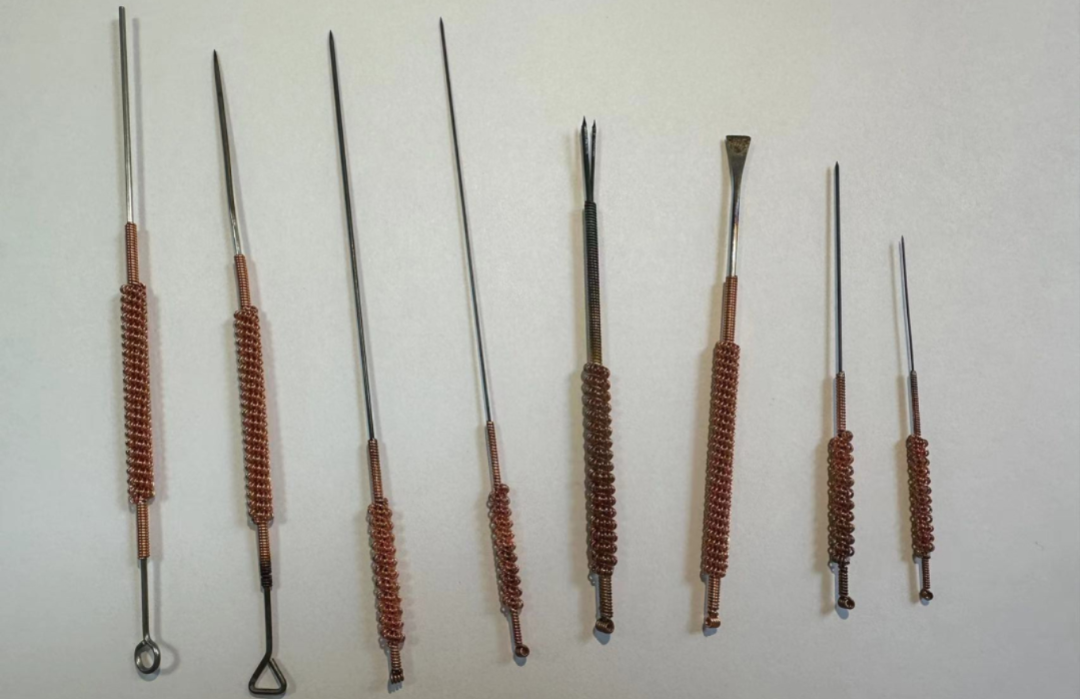
The fire needle, as a special technique in acupuncture, has the effects of warming the meridians, supporting the body’s Yang energy, and expelling pathogenic heat. Clinically, it can be used alone or in combination with other acupuncture techniques.
The modern fire needles are mostly made of stainless steel, measuring 3-4 inches in length, with a thick, round, sharp tip, and the handle made of tungsten alloy wire. They are characterized by high-temperature resistance, minimal deformation, and strong hardness at high temperatures.
Thick fire needles are commonly used for draining pus and reducing swelling, suitable for cysts and nodules, but not for the face or areas with thin muscles; medium-thick fire needles have a wide range of applications, except for the face and weak muscle areas, while fine fire needles are mainly used for the face and other weak muscle areas, as well as for the elderly, children, and those with weak constitutions. Flat-headed fire needles are often used for age spots and flat warts; multi-headed fire needles are primarily used for larger non-facial skin lesions, such as herpes zoster and postherpetic neuralgia, psoriasis, chronic eczema, and pruritus. Fine fire needles can be used on various body parts and for acupuncture retention, showing good effects for facial paralysis and trigeminal neuralgia.
Mechanism of Fire Needle Therapy

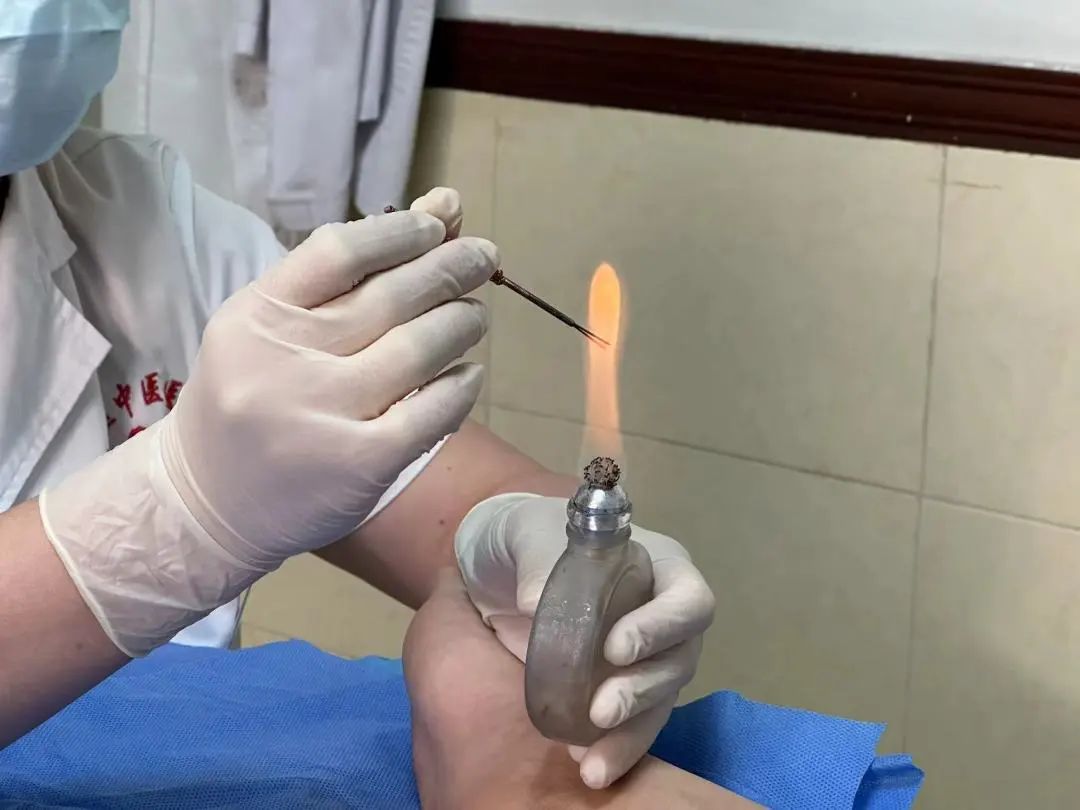
Fire needle therapy combines the stimulating effects of acupuncture on the meridian energy with the warming effects of moxibustion to achieve remarkable clinical results. The mechanisms of action include harmonizing Yin and Yang, supporting the body’s defenses while expelling pathogens, warming the meridians, opening pathways to expel evils, using heat to draw out heat, and the warming moxibustion effect. Experimental studies have shown that fire needles can enhance the phagocytic ability of white blood cells in experimental animals, promote the reabsorption and repair of diseased tissues; cauterizing the skin with fire needles can dilate local blood vessels, increase vascular permeability, and regulate inflammatory factors in the body. Therefore, it is commonly used for neck and shoulder pain, arthritis, as well as for the treatment of common and difficult diseases such as herpes zoster, eczema, vitiligo, and psoriasis.
Indications for Fire Needle Therapy

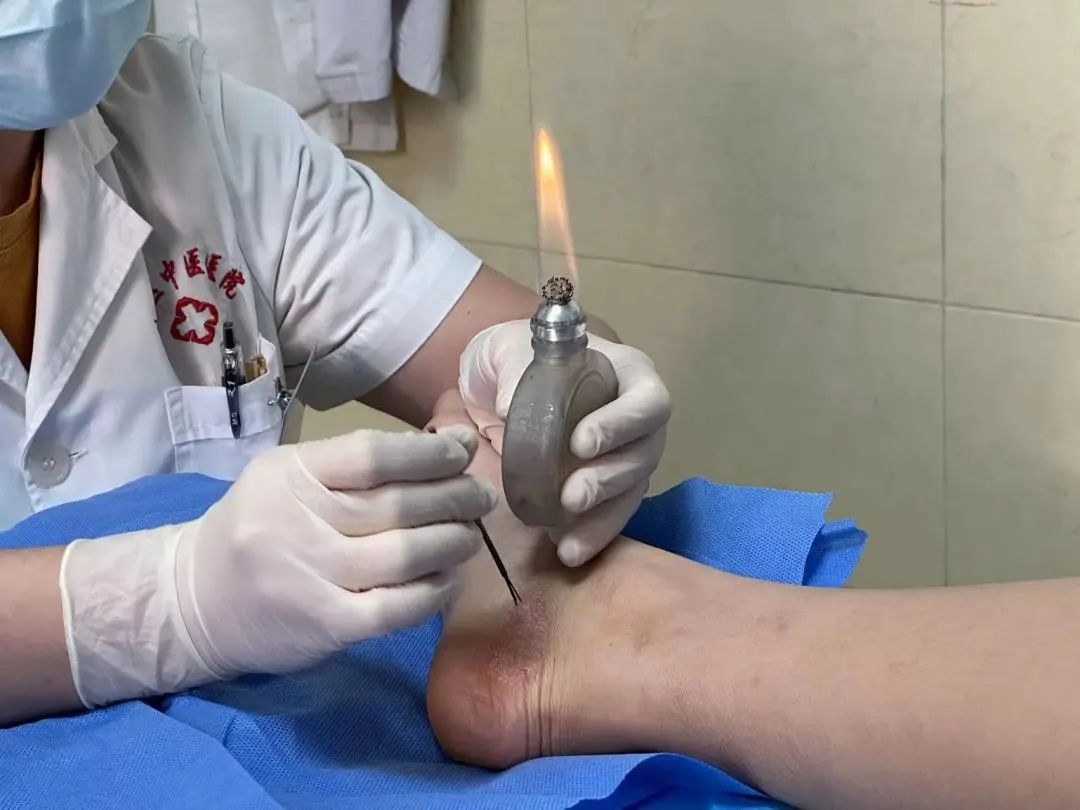
1. Fire needle therapy for myofascial pain syndrome. Fire needles directly introduce heat into the body through the acupuncture points, stimulating the meridian energy and invigorating blood circulation, warming and strengthening the Yang energy of the organs; at the same time, by cauterizing the acupuncture points, it opens the pathways of the meridians, allowing pathogenic factors such as wind, cold, dampness, and toxins to be expelled directly from the body through the needle holes, achieving a dual effect of supporting the body and expelling evils.
2. Fire needle therapy for sprains. The main clinical manifestations of sprains are pain and functional impairment at the affected site, often caused by sudden accidents leading to meridian damage, stagnation of Qi, and blood stasis. Fire needles can warm the meridians, promote Qi and blood circulation, thus alleviating pain and resolving stasis.
3. Fire needle therapy for tennis elbow and shoulder periarthritis. The aim of fire needle therapy is to enhance the local circulation of Qi and blood through external heat, disperse stagnation, and unblock the meridians to achieve therapeutic goals.
4. Dermatological conditions: Common dermatological issues include postherpetic neuralgia, pustular and cystic acne, flat warts, chronic pruritic skin conditions.
5. Internal medicine miscellaneous diseases: Insomnia, dizziness, sequelae of stroke, chronic gastroenteritis, bronchitis, common gynecological issues such as cold in the uterus, dysmenorrhea, and scanty menstruation.
Physician Introduction


Hu Liya
Attending Physician of Traditional Chinese Medicine
Profile: Master’s degree, graduated from Guangzhou University of Chinese Medicine, studied under Professor Li Jiqiang of the Lingnan Zhen School of Traditional Chinese Medicine at Guangdong Provincial Hospital of Traditional Chinese Medicine.
Specialties: Utilizing methods such as electroacupuncture, abdominal acupuncture, Huangdi internal needle, floating needle, bloodletting, cupping, and thread embedding to treat neck, shoulder, waist, and leg pain, dizziness, headaches, tennis elbow, facial paralysis, skin itching, chronic gastrointestinal diseases, insomnia, obesity, and sub-health conditions. Employing fire needle therapy for pharyngitis, herpes zoster, alopecia areata, acne, warts, spots, and multiple lipomas, as well as treating dizziness, chronic cough, and menstrual irregularities with traditional Chinese medicine.
END Scan to FollowSupport Rehabilitation, Support Health
Scan to FollowSupport Rehabilitation, Support Health
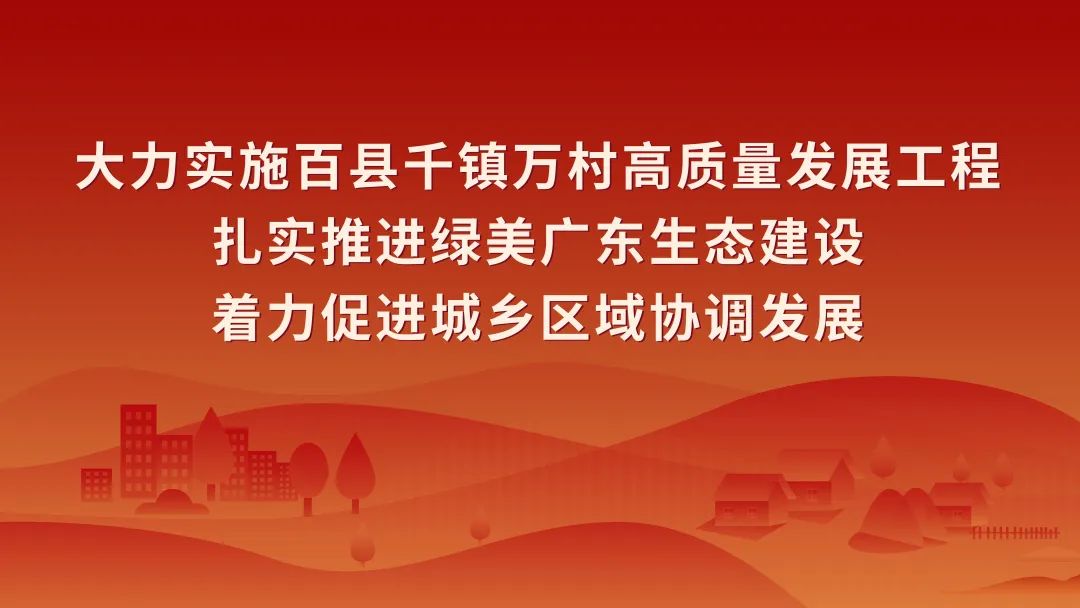
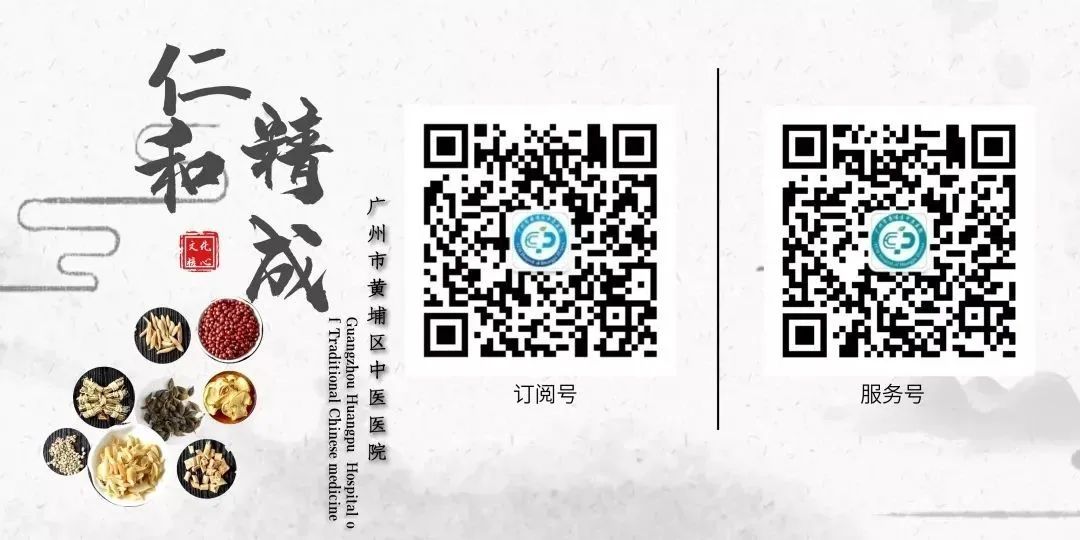
Contributed by: Rehabilitation Department
Edited by: Chen Chuanqi
Proofread by: Gu Daofeng
Initial Review: Wang Hanping, Liu Chunhong
Final Review: She Lingling
Final Approval: Zhang Quanjun

